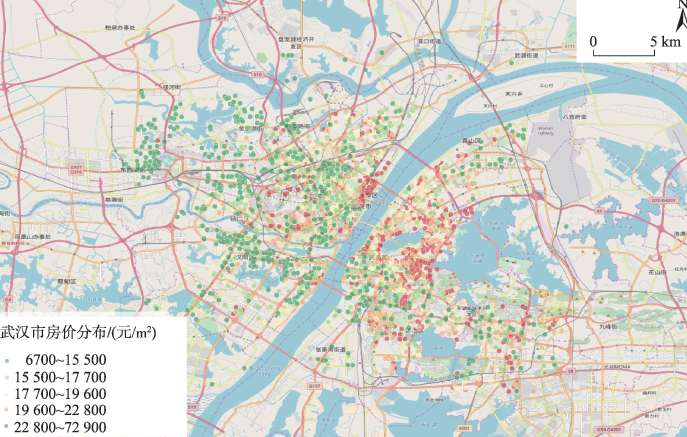ABSTRAT
China’s rapid urbanization has caused a large number of migrants to move to the city, which has also led to housing shortages. Rapid access to fine-scale house price distribution data plays a very important role in urban housing management, government decision-making, and urban economic model analysis. The availability of data and limitations of existing models make only a few studies involving the mapping of house price distribution at the microscale. By combining house price data with remote sensing images, this study builds a remote sensing image features mining model based on Convolutional Neural Network (CNN) and Random Forest (RF). The proposed CNN- based model in this paper can be applied for accurate and reasonable microscopic mapping of house prices without introducing auxiliary geospatial variables. Only using the house prices data and remote sensing images, we successfully carry out the house prices mapping with the precision of 5 meters in the downtown area of Wuhan city. By comparison with the results generated by the other three traditional mining techniques (including A: using spatial datasets extracted from auxiliary geographic dataset only, B: using original features extracted from high- resolution remote sensing images only, C: using original features extracted from high- resolution remote sensing images and auxiliary geographic dataset), the results show that the proposed CNN-based model has the highest house price simulation accuracy (R2 =0.805), at least 23.28% higher than the fitting accuracies of the traditional methods (A: R2 =0.592, B: R2 =0.0.434, C: R2 =0.653). Moreover, based on the fine- scale house price map, this study further analyzes the spatial heterogeneity distribution of housing prices in the downtown area of Wuhan city. By comparing the partial and overall similarity of the simulated house price distribution map calculated via the perceptual hash algorithm, the results also demonstrate that the house prices distribution of Wuhan city has remarkable fractal characteristics. The micro-scale house price data obtained in this study can provide a basis for microeconomics and fractal research in the urban economics. Meanwhile, this study also provides a brand- new research method for micro- scale economic analysis and resource optimization of large cities in China.

Q.E.D.









